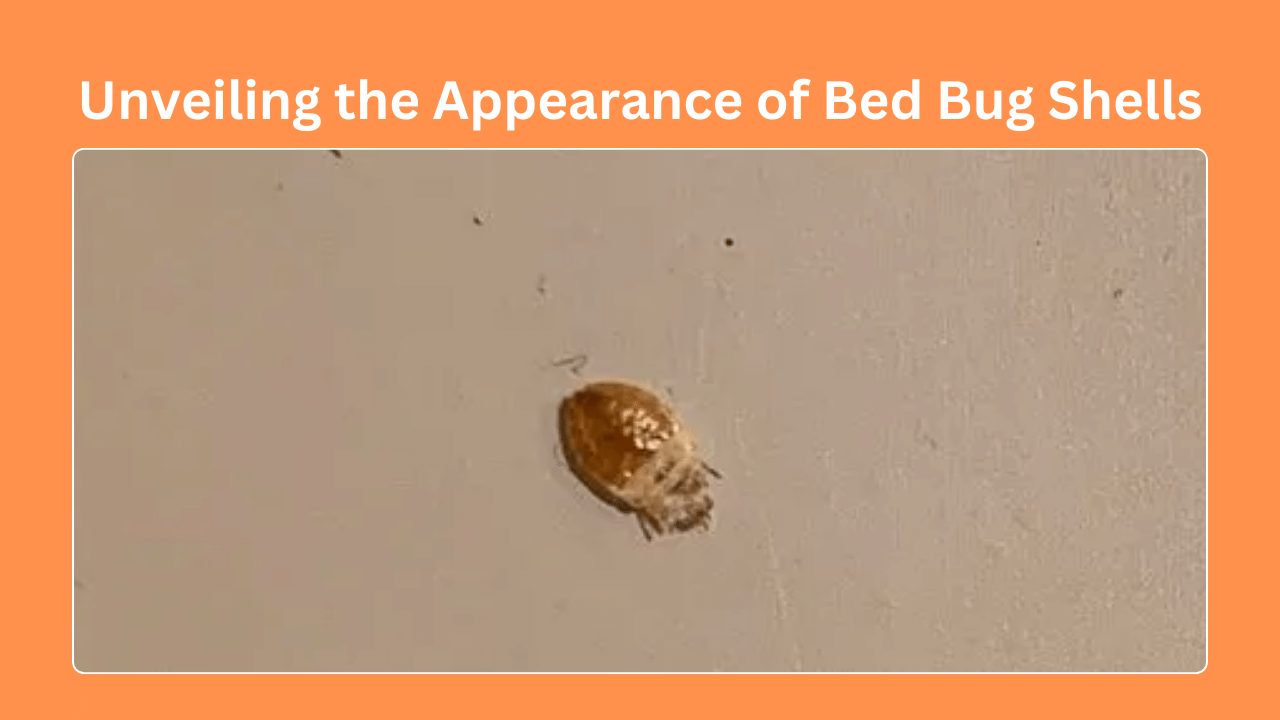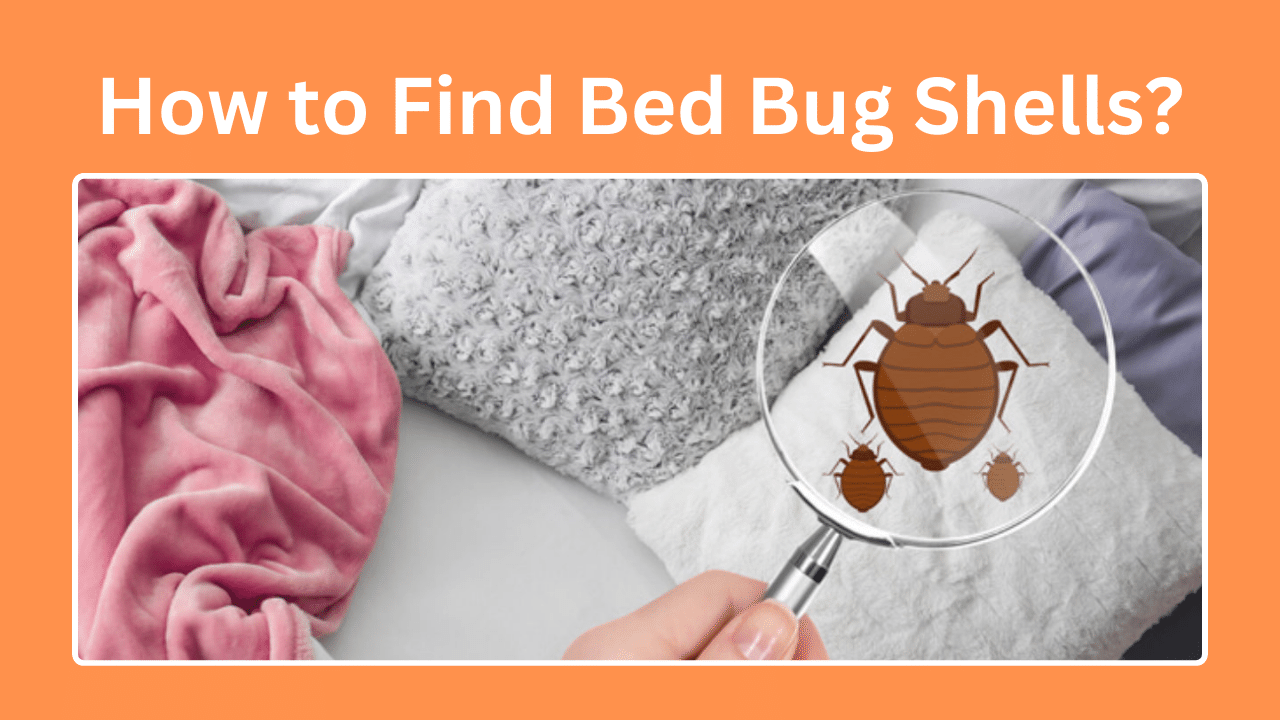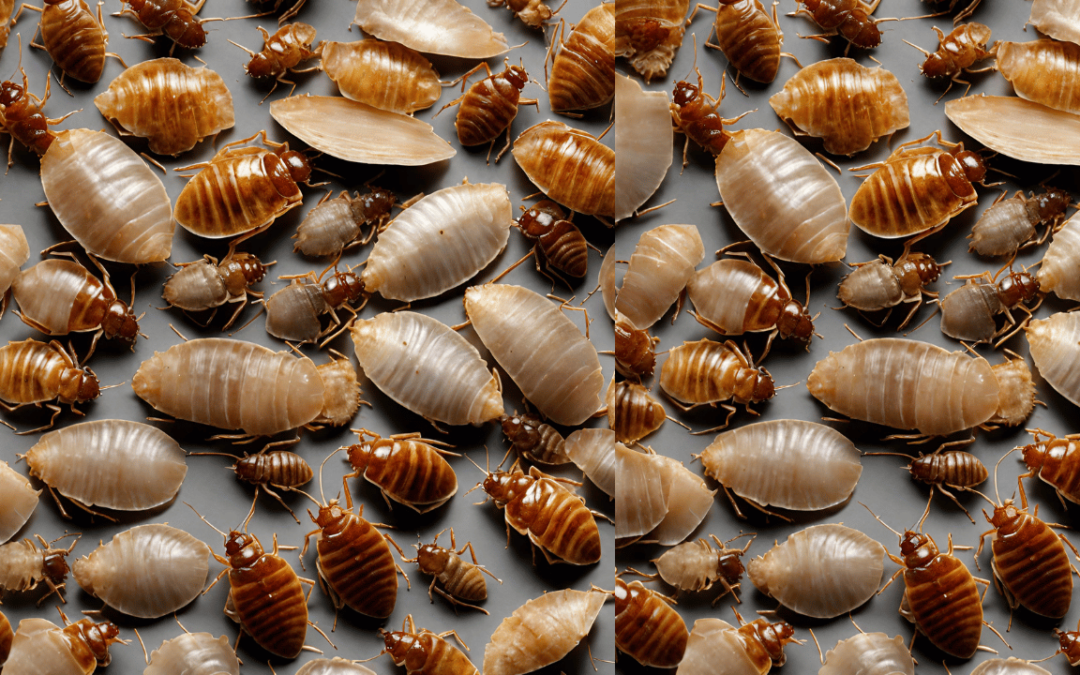Table of Contents
- How Bed Bug Shells Looks Like
- Unveiling the Appearance of Bed Bug Shells
- How to Find Bed Bug Shells?
- Found Bed Bug Shells, But No Bugs: Understanding the Implications
- Are Bed Bug Shells the Same Thing as Bed Bug Casings?
- Bed Bug Shells: What Do They Feel Like?
- Bed Bug Shells: A Sign Of An Infestation
- Bed Bug Signs
- Conclusion
Remarkably, these exoskeletons mirror the bed bugs, measuring from a minuscule 1mm to a more noticeable 5mm. Their color? A subtle light tan or straw, blending effortlessly with your surroundings. But it’s not just their size and color that make them intriguing. Bed bug shells contain gland reservoirs and aldehydes, releasing a distinct odor.
Intriguingly, research has shown that these shells play a role in guiding adult bed bugs to their hideouts, creating a cycle of infestation. They often congregate near these shed skins, a telltale sign of a growing bed bug population.
The presence of bed bug shells can be a crucial warning sign. Many, suspecting an infestation, search for these shells as their first investigative step. However, it’s common to mistake other household debris like food particles or carpet beetle sheds for these elusive shells.
In the world of pest detection, bed bug shells are more than mere remnants; they are vital clues. Despite their small size, making them hard to spot, recognizing these exoskeletons can be critical in identifying and addressing a bed bug infestation. Watch for these telltale signs – your early warning system against these unwelcome guests.
Unveiling the Appearance of Bed Bug Shells
Bed bug shells, the discarded exoskeletons of growing bed bug nymphs, are fascinating yet critical indicators of a possible bed bug infestation in your space. These shells, often overlooked due to their minuscule size, resemble bed bugs, both in shape and size, making them crucial for early detection. Generally, these shells range from a mere 1mm to about 5mm in length, and their color is a subtle light tan or straw, allowing them to blend seamlessly into various environments, from bedding to furniture crevices. Upon closer inspection, you’ll notice that these shells are not just inert cast-offs; they carry remnants of gland reservoirs and emit a unique aldehyde-based odor, a distinctive characteristic of bed bug presence.

What makes bed bug shells particularly noteworthy is their role in the life cycle and behavior of bed bugs. Studies suggest that these shells help adult bed bugs locate their harborage areas as they gather near these shed skins. This behavior underscores the importance of these shells in understanding and managing bed bug populations. Interestingly, while many individuals actively look for bed bug shells when suspecting an infestation, they often misidentify other small household debris like dried food particles or carpet beetle sheds as these shells, leading to confusion and misdiagnosis.
The appearance of bed bug shells in your home should not be taken lightly. Although small and challenging, recognizing them can be the key to early intervention in bed bug control. These shells serve as a silent alarm, alerting homeowners and pest control professionals to the lurking presence of bed bugs. In the battle against these pests, understanding and identifying bed bug shells is an invaluable skill, offering a crucial advantage in detecting and managing these unwelcome house guests before they become a more significant problem.
How to Find Bed Bug Shells?
Discovering bed bug shells is crucial in uncovering bed bugs during the day. But how can one effectively locate these elusive shells? Here are five expert tips to guide you in your search for bed bug shells, ensuring a thorough inspection:

- Examine the cracks and crevices of your bed frame, headboard, and nightstand. Bed bugs’ favorite hideouts are these areas; their shells are often left behind here. Imagine finding a bed bug shell nestled in a crease on your headboard – a joint discovery.
- Next, turn your attention to your mattress. Inspect every inch, especially the stitching and seams. Employing a bright flashlight will make this task much more accessible, helping to highlight even the smallest of shells.
- Look at the areas behind pictures and paintings on your walls. In one memorable inspection on the Upper West Side, a professional found shed skins, bed bug feces, and live bed bugs behind an unsuspecting painting.
- Investigate any drawers or cabinets near your bed. These spots often harbor bed bug shells unnoticed and out of sight.
- Finally, probe under the bed frame. In a recent case, an inspection revealed several fecal stains, cast skins, bed bug eggs, and nymphs clinging to the underside of a wooden bed frame.
With these tips, finding bed bug shells can become more manageable. However, it’s crucial to preserve any potential evidence you find. Identifying these shells is critical to confirming an infestation and taking steps toward eradication.
Found Bed Bug Shells, But No Bugs: Understanding the Implications
Imagine the scenario: you’re confident you’ve stumbled upon a bed bug shell, a sign of unwelcome guests in your home. However, experts caution that appearances can be deceiving. Many times, professionals arrive for an inspection only to find that what’s believed to be bed bug shells are, in fact, entirely different substances. The list of usual suspects includes everyday items like lint, carpet beetle skins, random food crumbs, animal dander, or even human skin cells!
The challenge here lies in the deceptive nature of these materials, which can mimic the appearance of bed bug shells to an untrained eye. This common mix-up underscores the importance of expert verification. If you find something you suspect might be a bed bug shell but find yourself second-guessing, there’s an easy solution. Reach out to the professionals. With their expertise, they can swiftly determine whether your find is a cause for concern or a harmless look-alike. Better yet, a quick solution is at your fingertips in today’s digital age – send a photo via text. This way, you can have your suspicions confirmed or alleviated without delay, ensuring peace of mind or paving the way for prompt pest control actions.
Are Bed Bug Shells the Same Thing as Bed Bug Casings?
Various terms float around the mysterious world of bed bugs, pointing to the same phenomenon: ‘bed bug shells,’ ‘bed bugs casings‘ ‘exuviae,’ ‘shed skins,’ and ‘cast skins.’ These terms all refer to the fascinating process of a bed bug’s growth journey. Picture this: once a bed bug nymph emerges, it must feed on blood to fuel its growth. But before it can grow, it undergoes a remarkable transformation – shedding its skin.
This shedding is not a one-time event. A bed bug will astonishingly cast off its outer shell five times as it transitions from hatching to adulthood. Each shedding is a step closer to its mature form. However, once the bed bug reaches maturity, this cycle of shedding ends. No more skins are cast; the bed bug has compared its final, fully-grown state.
Understanding this lifecycle is crucial, especially when dealing with bed bug infestations. Recognizing these shed skins can be a telltale sign of the presence of these elusive creatures, marking stages of their growth hidden in the nooks and crannies of our homes.
Bed Bug Shells: What Do They Feel Like?
Imagine stepping on something so small yet hearing a distinct crunch underfoot. That sound could very well be a bed bug shell being crushed. These bed bug casings, often in infested areas, present a unique texture. They are neither excessively hard nor unusually soft. Instead, they strike a balance, being firm and rigid. This firmness ensures that when you do come across a bed bug casing, it retains the precise shape of a bed bug.
This characteristic of bed bug casings is not just a curious fact but a crucial piece of information in identifying and understanding bed bug infestations. The ability of these casings to maintain their bed bug-like shape even after being detached from the insect provides a clear indicator of their presence, offering a tangible sign of an unseen pest lurking in the vicinity.
Bed Bug Shells: A Sign Of An Infestation
Discovering bed bug shells in your space is a definitive red flag, signaling a bed bug issue that demands immediate attention. These elusive pests, known for their stealthy presence, can thrive in almost any environment where they hatch and breed. Interestingly, finding their shed skins is often easier than spotting the bugs. These shells, a byproduct of the bed bugs’ growth process, cease to appear once the bugs reach maturity. This cessation of shedding indicates that the bed bugs have developed a hardened exterior due to feeding on blood.
These molted skins are a clear indicator of an active infestation. It’s a sign that bed bugs have infiltrated your space and are thriving and multiplying. This discovery should be taken as an urgent cue to take action against these unwanted invaders. The finding of bed bug shells is more than just an unpleasant surprise; it’s a call to action for effective and prompt bed bug eradication measures.
Bed Bug Signs
The insidious presence of bed bugs is often first revealed by telltale bite marks on the skin. These bites, typically red, itchy, and sometimes arranged in a line or cluster, are a warning sign. But the evidence continues. Other indicators include:
- Blood stains on sheets or furniture.
- Small brownish-red spots on bedding or walls.
- A distinct sweet, musty odor.
In the United States, the bed bug, comparable in size to apple seeds, has made a significant resurgence. An adult bed bug can be as large as a quarter, making it a noticeable pest. However, primarily a nuisance, bed bugs are also implicated in disease transmission. Their infestations are not just physical irritants; they often lead to severe psychological and emotional distress. These nocturnal feeders target exposed bare skin while humans sleep, leaving behind an itchy, often welting rash.
The battle against bed bugs can be complex. Over-the-counter pesticides are available, but effective treatment typically involves a multifaceted approach. This includes inspecting and monitoring for signs of bed bugs, reducing clutter, employing physical barriers, and applying pesticides cautiously. It’s noteworthy that combining bleach with some pesticides can create more toxic compounds, posing significant health hazards. In cases where multiple rooms or areas are infested, a comprehensive heat treatment might be necessary.
Enlisting professional pest control services is crucial due to the intricacies of dealing with bed bug infestations. These experts can provide the necessary assistance to tackle the problem effectively, ensuring a thorough eradication of these unwelcome guests.
If you are looking for Cockroach Control Services in Dhaka. Call Us Today

